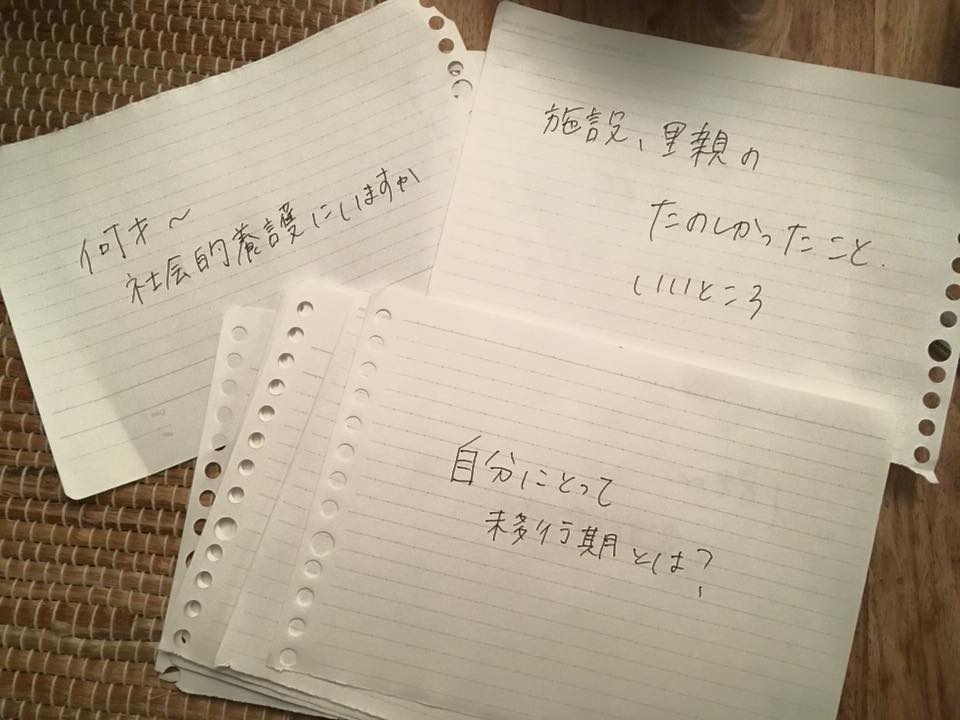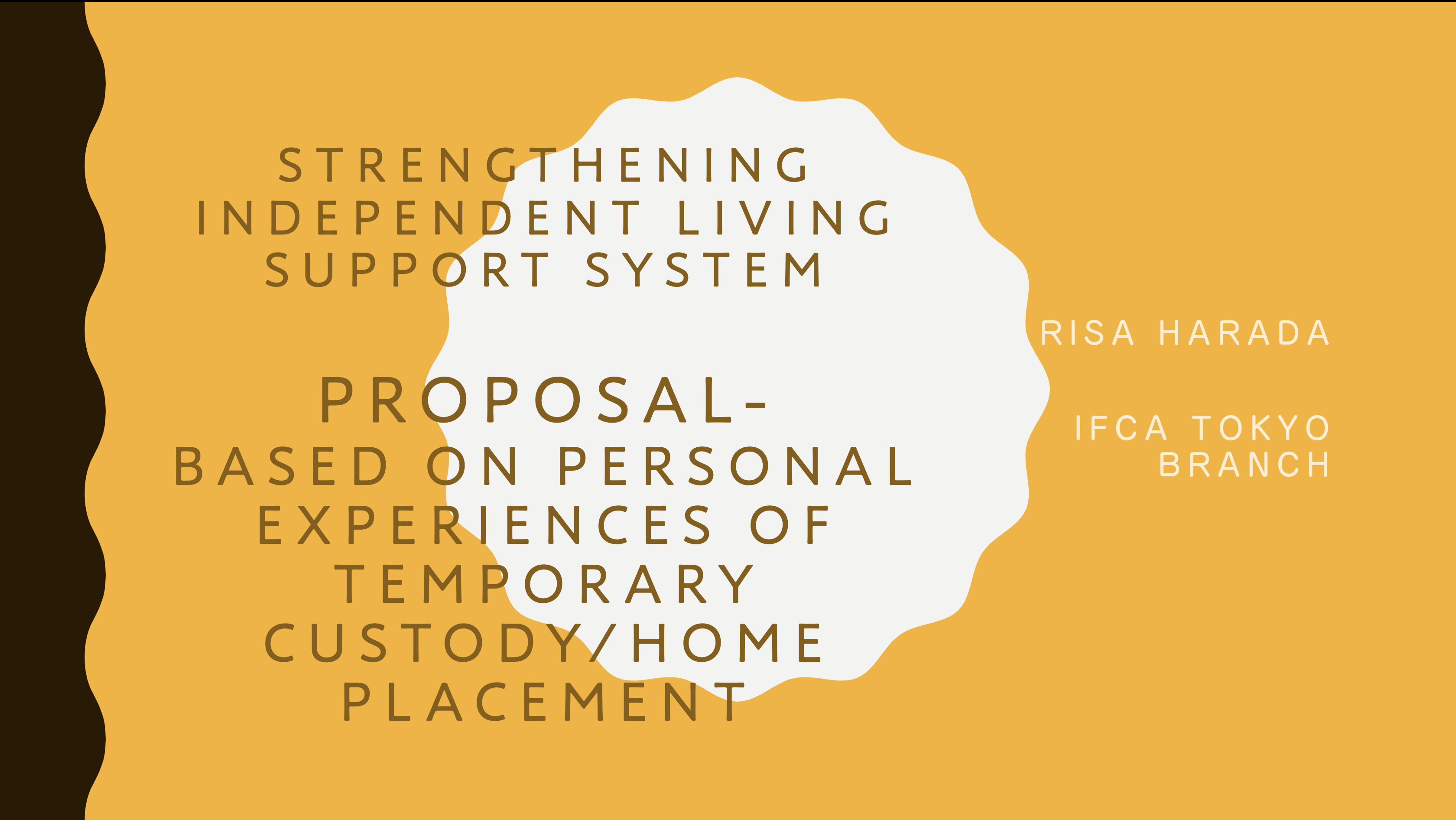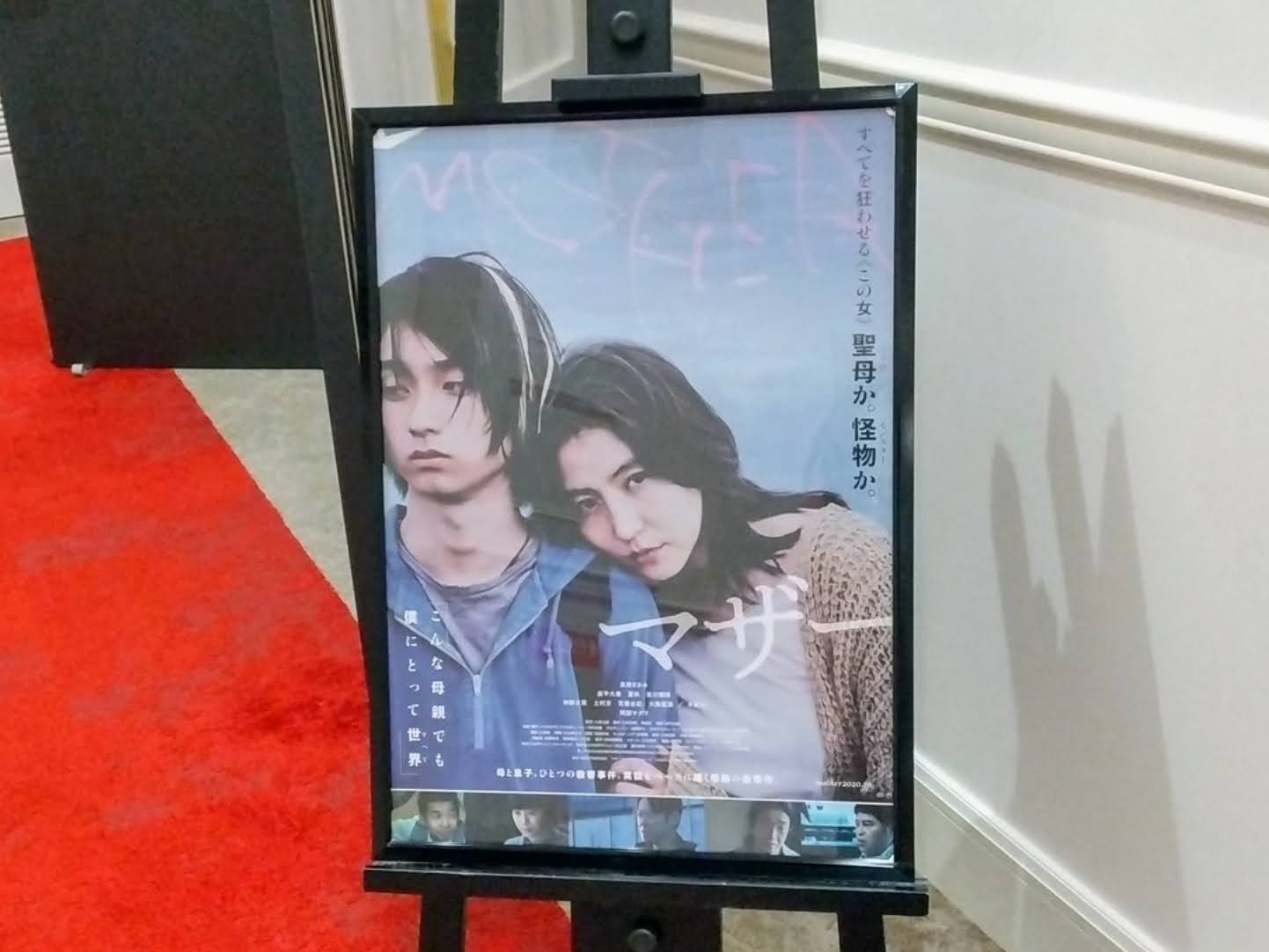Hello Everyone. I am YN with IFCA Japan Alumni Team. I am 19 years and am in my sophomore year studying social work at a university.
I was originally raised by my mother who was a single parent. However, when I was 14 years old, my mother became seriously mentally ill and was hospitalized. As a result, I was no longer able to live with her. Since there weren’t any other relatives who were able to take care of me, I was taken into custody by a child protection agency. Between the ages of 14 and 18 when I graduated from high school, I lived in a child protection facility.
Chihiro spoke about child protection facilities. So, I think that you have some understanding of current circumstances of the Japanese foster care system. I would like to talk about my own experience living in one of these child protection facilities.
Structures and rules differ from one facility to the other. I would like to talk about the facility that I lived in.
My facility had four buildings on one campus. Each building had 16 children. I lived in one of these 4 buildings. However, since I was 14 years old and was older than most residents, I lived with younger children who are in kindergarten and elementary school.
The first thing that struck me was the sight of staff and children having a meal all together.
When I was living with my mother, I always ate with her. However, seeing 8 people at one table eating was quite a sight. As I mentioned, one home had 16 children, but they weren’t able to fit 16 people at one table. So, they divided these children into two groups. It felt strange because they almost looked like having a picnic with close to 10 people eating together. However, looking back, I now know that they were doing this to create bond between children and staff, and it really is a wonderful way to facilitate that atmosphere.
In order to build relationships with children, staff made a lot of effort. For example, they came with children to stores to choose clothes with them. They sometimes took us to a café to listen to us talk about our family matters and complaints associated with living in a facility environment. During my 4 years at this facility, two staff members took good care of me. They still care for me and, we continue to exchange messages and to see one another once a month to talk about what’s going on in our lives. They are young staff, so they are not like my mother but more like my mentors and big sisters.
There were a lot of pleasant and enjoyable things at the group facility. However, there also were not so great things. I was not happy about the size of our rooms. According to the Japanese child welfare law, 4 children share a room in a child protection facility. At the facility I lived in, two same-sex children shared a six-tatami room. After putting a desk and an armoire in the room, you can only put two futons with no room left. That was how small it was. Also, the building itself was old and when it rained, the roof leaked. I was not very happy about my roommate either. Since I was older than most children in the home, I was paired with an elementary school age child. I did not care about her age. However, when I was studying for a final, my young roommate got in the way of my studying. When she was a kindergartener, she peed on her futon, and we had to change her futon together in the middle of the night, and I suffered from the smell of urine in the morning. It was stressful at times. There were many problems that did not have any quick solutions such as our buildings being so old and not being able to change roommates quickly to please everyone. However, staff members were always willing to listen to us, and their willingness to understand us really made them saviors for us.
Staff at my facility got along with one another very well. They often gathered together at their own homes for parties, and shared ideas to care for the children in the facility. In other words, they worked together to reach the common goals and ways to care for us. As a result, we did not have to worry about dealing with individual staff’s differences in caring styles and approaches. For me, the 4 years at this facility with both positive and not so positive memories. However, one thing that I can say with confidence is that I can maintain positive attitudes right now because I was blessed by good people and environment that surrounded me for the 4 years in the child protection facility. In Japan, there still are many facilities where there are abuse of children by staff members. There are many foster children living in a horrific facility environment. I cherish my experience in the facility that I lived in. So, I wouldn’t generalize child protection facilities as negative places to live. However, they do need improvement.
Through IFCA’s activities, I would like to take a role of representing the voices of other foster children and of improving the child welfare systems.
Thank you for your attention.








Leave a Reply